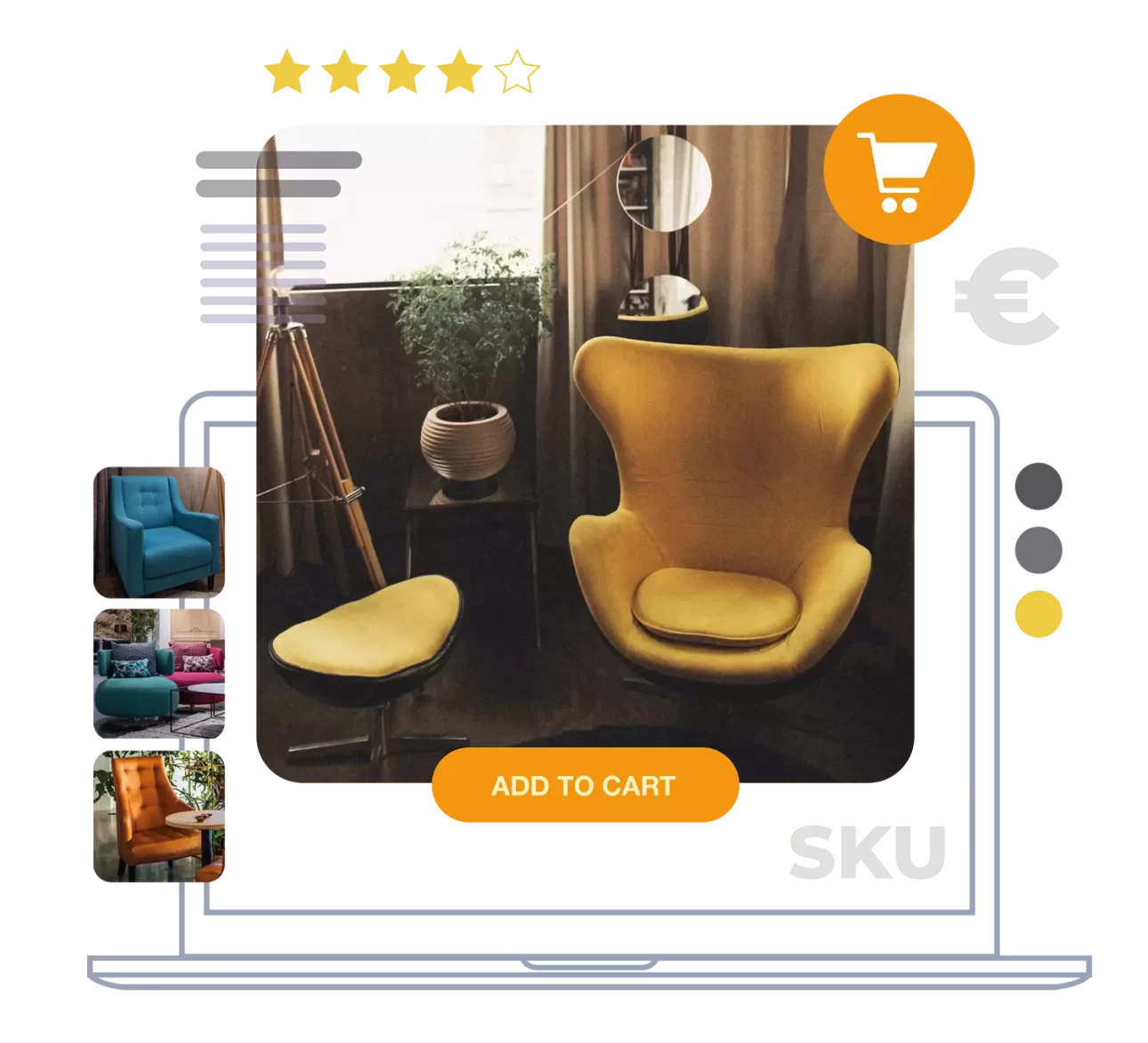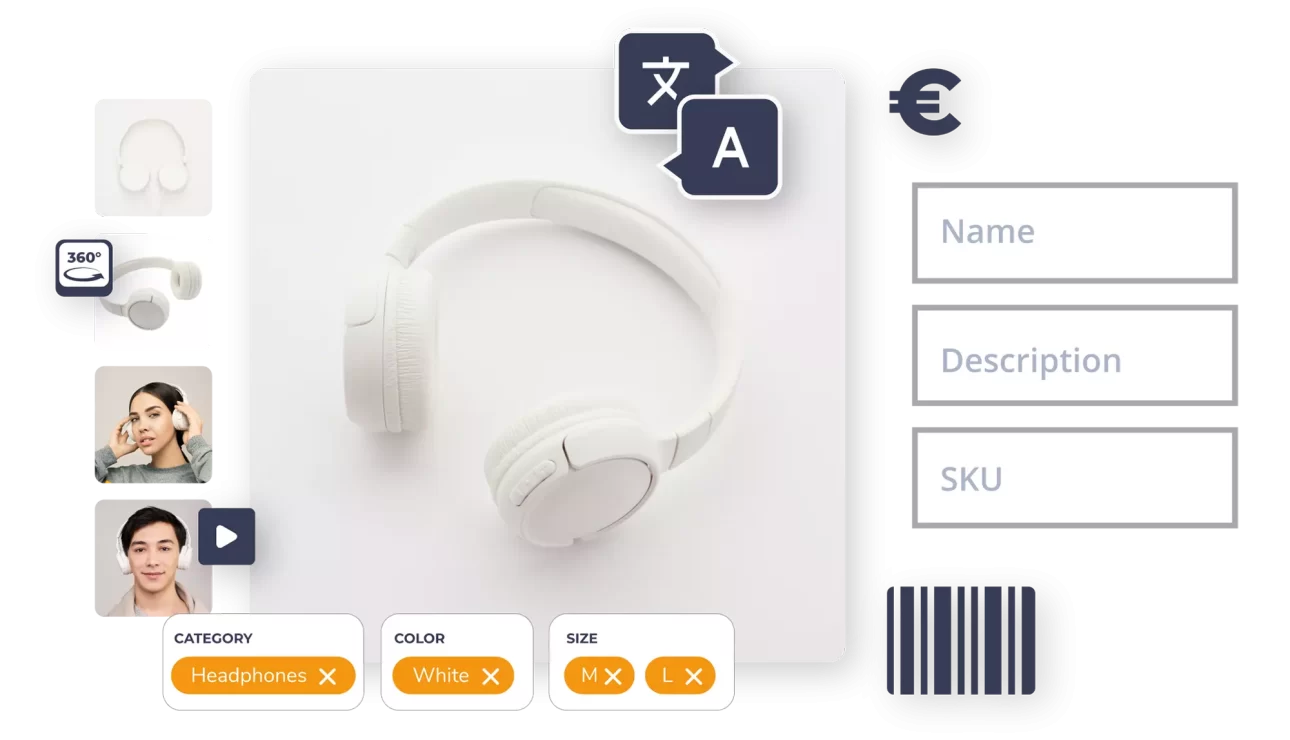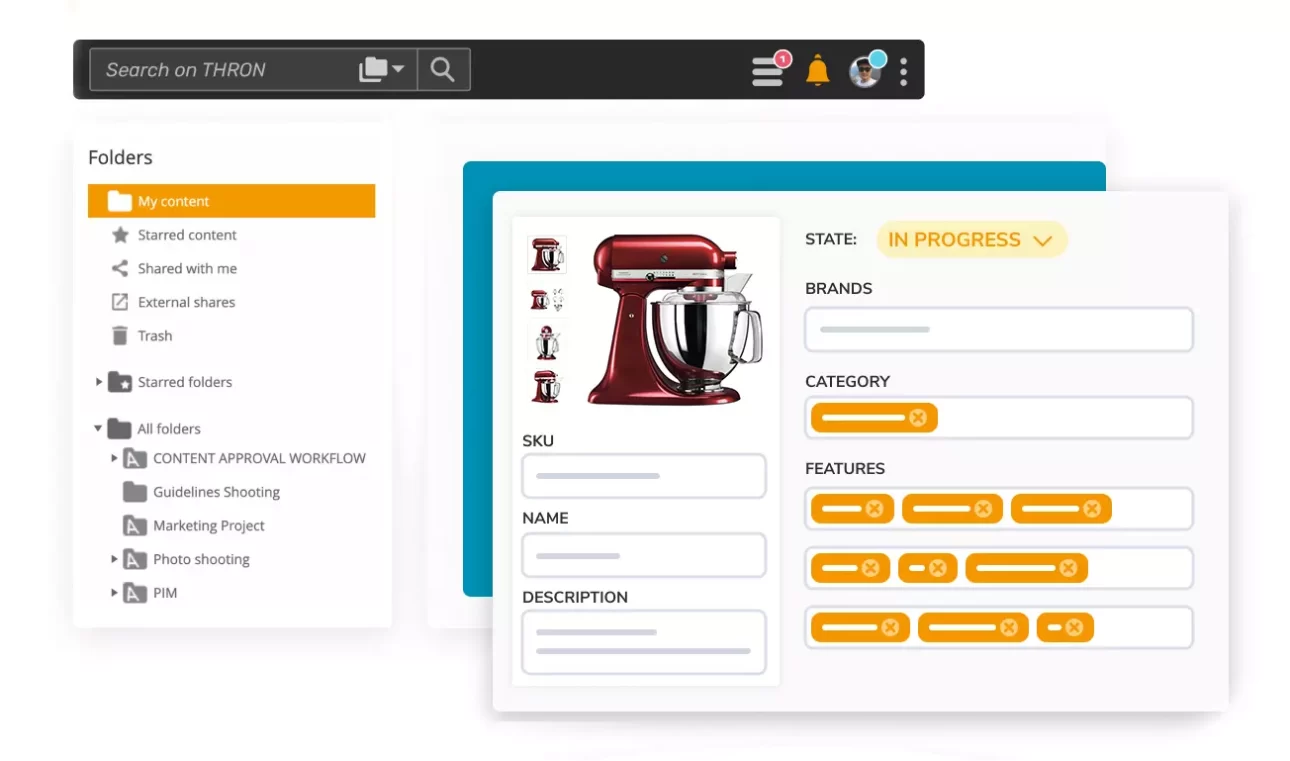
For figures such as e-commerce managers, product managers and brand managers, taking care of the experience that customers, even potential customers, have with a company’s products is a priority.
Online, this care also involves the presence of clear, complete, up-to-date and reliable product information. But that’s not all.
So many different products to enhance and distribute across a large number of digital channels. This is the effort that corporate teams dedicated to managing e-commerce.
In traditional channels we find physical products on the shelves. In digital channels, the shelves are the web pages of a website or online shop.

The physical product is replaced by digital assets, which combine product information and multimedia content to represent it.
For example?
Searching for a t-shirt online and landing on any e-commerce or marketplace it is easy to notice that there will be two types of elements on this page. Photos or videos on one side, product information on the other (such as size, fit, composition, washing instructions and so on).
So it’s not just a matter of B2B catalogue.
Together, content and product information, offer a quality experience. If both are handled properly, of course.
Let’s leave content aside for a moment and focus on product information. As anticipated, it is crucial to manage it properly.
This information, in fact, is intended to populate the most varied end channel such as the product catalogue (typically in B2B contexts) and e-commerce (typically in B2C contexts). In both cases, they should always be perfectly aligned.
However, it is common for product data to be fragmented in various software.
For example, in PLM (Product Lifecycle Management) where product design and construction information such as technical specifications reside. Or in the ERP, where data relating to material supplies and product inventories reside. Not to mention Excel spreadsheets that often collect characteristics such as colours, sizes and materials for each product code.
In these contexts, those involved in populating digital sales channels have to jump among different applications to find the information they need, put it together and make it consistent.
Many manual errors are made, time is wasted on repetitive tasks and, above all, there is a lack of a reference point where the correct information can be found.
It is in this context that product information management often becomes necessary and the need for a PIM arises.
Product Information Management is a software designed to centralise, organise and manage information about a company’s products.
By integrating with different business tools – such as ERP, CRM e PLM – PIM aggregates product information such as colours, measurements, descriptions and technical specifications into a single digital space.
And then whati?
The centralised information are not only organised and integrated, but also inserted into product sheets that populate communication channels such as the web, e-commerce and digital catalogues.
Concretely, a Product Information Management software (PIM software) allows you to:
Is that all? Not quite.
We said it a few lines ago.
Product Information + Contents = Asset for digital channels.
To populate the product sheets of your product catalogue, marketplace, online shop or website words and numbers are not enough.
Managing product information is important, but multimedia content should not be forgotten!

In many companies, both are managed by dedicated software.
While product information is managed by Product Information Management, contents are managed by Digital Asset Management solutions (DAM software).
Taken individually, a PIM and a DAM enable optimal management. Except that different tools:
Therefore, the ideal is to consider (and manage) contents and product data from a single point.
The user experience of e-commerce users – as well as catalogues users – is successful if both contents and product information are optimally distributed.
For this to happen, a single tool is needed to centralise and manage both. Like a DAM PLATFORM, for example. A solution with advanced features for the management and distribution of digital assets, which is not limited to multimedia content but also includes data and product information.
Some resulting benefits:
To sum up, a Product Information Management tool is certainly a great help to those involved in the management of product information for marketing purposes.
Those benefiting from the advantages of Product Information Management software are in particular companies with a large product catalogue, which require the management and distribution of a lot of information such as specifications, attributes and descriptions.
But for a quality user experience, contents must also be considered.
THRON PLATFORM enables not only the creation, management, organisation and distribution of contents such as images, video, audio and documents. It also natively supports product information.

By dialoguing with tools such as ERP and PLM, the data of each product is centralised and associated – either manually or automatically thanks to AI – with the related content.
Contents and related product information form the core of each channel’s product page and are distributed together, natively.
THRON’s digital ecosystem also includes the option to choose THRON PIM, the expansion to create, approve and organise product scheets from a single point for all channels, managing translations and product variants.
Whatever your choice, remember to avoid using different tools as much as possible. Integrations, however well done, as well as costing money, must be maintained over time, generate silos and do not guarantee the control that a complete platform can provide.